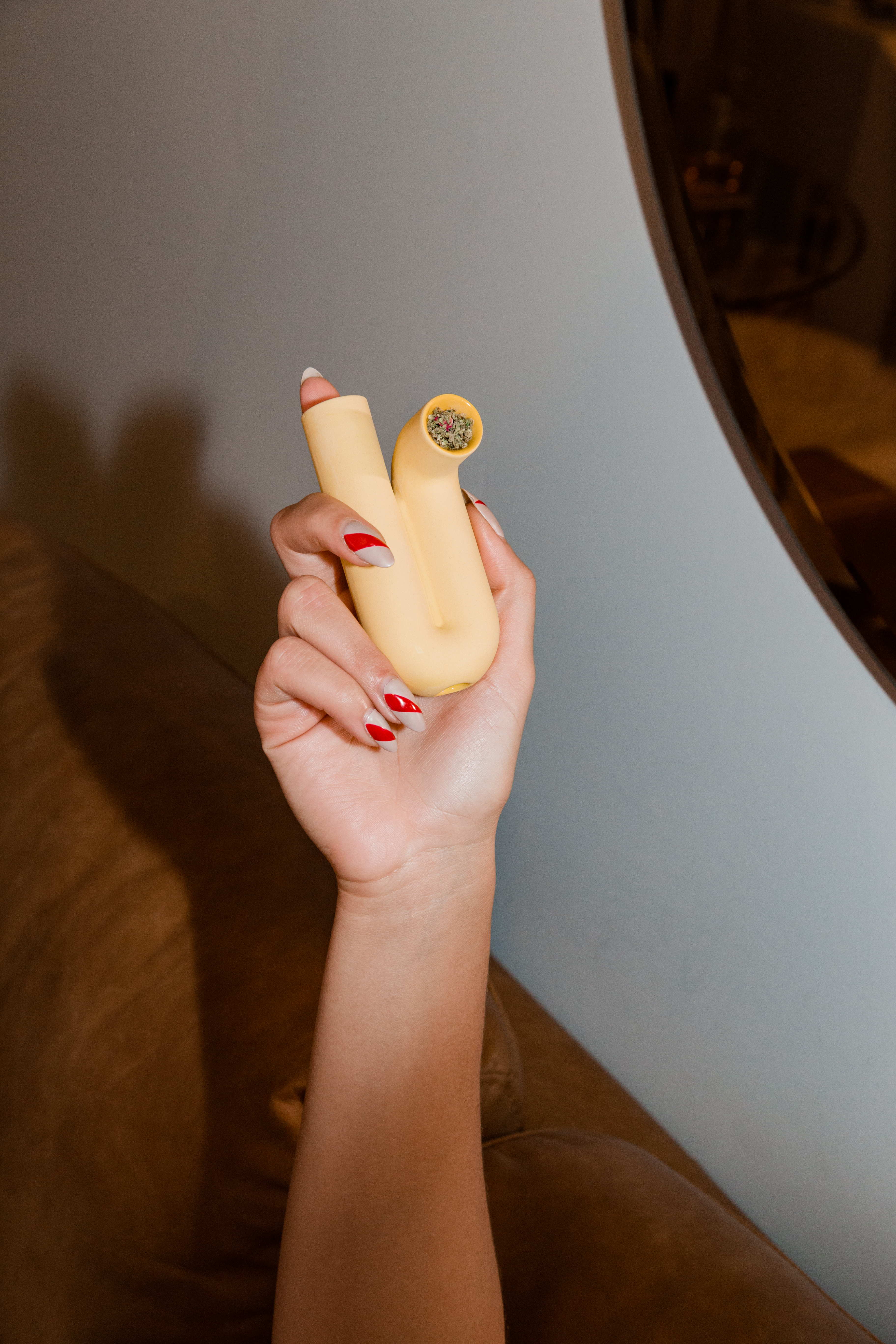
By Danielle Guercio
Cannabis culture and fashion are in what many have called “bad taste” for years, but who is in charge of this consensus? Women’s beauty and fashion magazines were notoriously slow to embrace cannabis not only for its practical and medical uses, but also for its style, owed to reputation that many naively label as outdated or unfashionable. Beauty podcast Fat Mascara even went so far as to describe a weed manicure with the Wintour-esque, Devil Wears Prada quip “not chic” in a 2015 episode.
It’s this attitude that is hardest for cannabis lifestyle enthusiasts to break down—and it props up a brutal status quo that they may know little about—owed to privilege. Oftentimes it’s the fans and readers of these figures who end up more than clueless about the benefits of the plant outside trendy and oft-covered CBD.

For the people who have not only believed in the cannabis plant, but who have stuck by tie-dye, hippie fonts, and the OG cannabis aesthetic until it’s inevitable and current revival, this is a time of both pride and annoyance. These styles of clothing and cannabis accessories have been associated with a male customer, male band member, male bong holder, or otherwise, for the most part, but never with the stylish or cutting edge woman, until now.
Keeping bongs—and weed culture—chic is one of Maya Shaw’s specialties. As the owner of Shaw Shop, she crafts space for women, femmes, and non-binary people to enjoy cannabis art and culture judgement-free, but also hopefully criminal justice system free.
Shaw tells the Emerald that women—particularly women of color—are the real leaders in this industry, “While stats are showing that women in leadership roles in the industry are dwindling, I believe that more women are creating their own businesses, platforms and communities so that they can see themselves represented in the space on their own terms.”
Small businesses have often been the domain of the marginalized—and the culture creators—while bigger firms full of cisgender white men sweep in the capital. Shaw is not alone in calling out this cannabis money grab as it leaves vital contributors unacknowledged.
“The corporate cannabis world has some work to do: we need more women CEOs, directors, and creatives in those conference rooms!” Shaw adds. “If you look around your table and you only have women or people of color to fulfill a quota, you’re doing it wrong.”
Creative expression is one realm in which women in cannabis are shining. Shaw’s curation is shepherding other visionaries into the space, and to the eyeballs of eager customers.
“I have room to express myself because I’ve created the room for myself and hoped people would be into it. I created my business because I saw something missing that felt authentic to me—and maybe someone else,” she explains. Having the confidence to know your vision is shared by others is one of a true innovator.
Shaw continues, “When we create to create and not to capitalize or bandwagon, people can feel that. I am grateful to have attracted the right partners into my circle who are open, creative and trailblazing.”
Shaw’s aesthetic is distinctly ‘60s and ‘70s flavored, and it not only pays homage to some of the most visible stoners in history, it’s got a personal connection.

She considers this a product of her upbringing by parents who were denizens of this formative era in weed history. “Along with their friends, they instilled a lot of ‘70s culture in me and my brothers,” she explains.
“One of my favorite albums from childhood is Perfect Angel by Minnie Ripperton. It’s an album that I listened to every time I sat down to work on the creative collateral for Shaw,” she says. “This album really made me recognize the power of music. I also found inspiration in the stories and photos from my parents’ younger years where you can feel the push and pull of the shifts that came with the hippie/revolutionary movements of the time.”
She tells the Emerald, “The main objective in the shop’s curation is to highlight Womxn and LGBTQIA+ folk, because providing a platform for those artists is my number one [priority],” especially through making space for their creations and products.
Shaw makes no bones about her fight to be seen completely, not conditionally, in cannabis. “When I hear and see gender based discrimination I call it out,” she says. “It’s frustrating to be both the person that experiences the discrimination and the person that fights against it, but [it’s still] early in the industry—it’s a part of the progress.”
The Shaw Shop aesthetic—floral heavy, generously tie-dyed—is a rare, unique spin on the not-so-novel stoner staple look.
“I don’t think people even realize the culture behind tie-dye, many of the techniques come from Japan,” she says.
She explains how it’s all deeper than the “Deadhead” look, “The ultimate background behind tie-dye is that it’s such a meditative process and there are so many different types of dyeing processes,” she says. “From shibori, to suminagashi—where people literally meditate or get high before they do the dyeing technique.”
Shaw’s devotion to the dreamy look is trendsetting in the cannabis industry, and there is a fine line between people appreciating her work and being culture vultures. It’s landed her many followers in the close-knit cannabis scene; but there should also be gigs and partnerships—not just serving as inspiration for the mass market.
“I just want these brands, especially the ones that have more money, to hire the people they are inspired by. Instead of putting someone on your mood board, hire them to be in the same room as you are to create the mood board,” Shaw says.



Leave a Reply